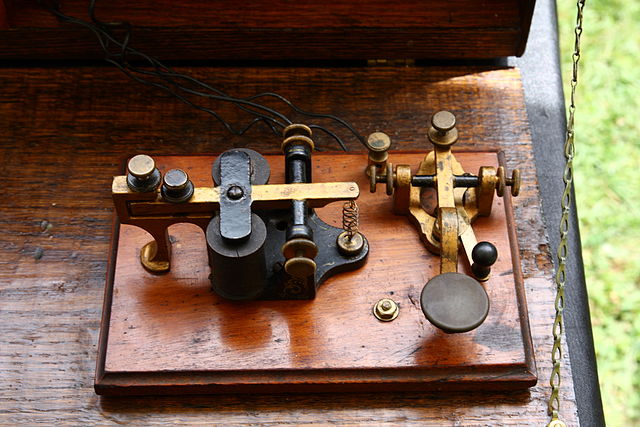Railway semaphore signal is one of the earliest forms of fixed railway signals. This semaphore system involves signals that display their different indications to train drivers by changing the angle of inclination of a pivoted 'arm'. Semaphore signals were patented in the early 1840s by Joseph James Stevens, and soon became the most widely used form of mechanical signal. Designs have altered over the intervening years, and colour light signals have replaced semaphore signals in most countries, but in a few they remain in use.
Upper-quadrant signal on the Santa Fe Railroad, 1943. The vertical position indicates a "clear" aspect.
Lower-quadrant stop signals at St. Erth in 2007
Somersault signals at Carrickfergus railway station, showing the distinctive central pivot about which the arm "somersaults"
Signals on the River Weaver Navigation, directing boats into the paired locks
Semaphore is the use of an apparatus to create a visual signal transmitted over distance. A semaphore can be performed with devices including: fire, lights, flags, sunlight, and moving arms. Semaphores can be used for telegraphy when arranged in visually connected networks, or for traffic signalling such as in railway systems, or traffic lights in cities.
Sailor with signal lamp
Heliograph
Electric telegraph







